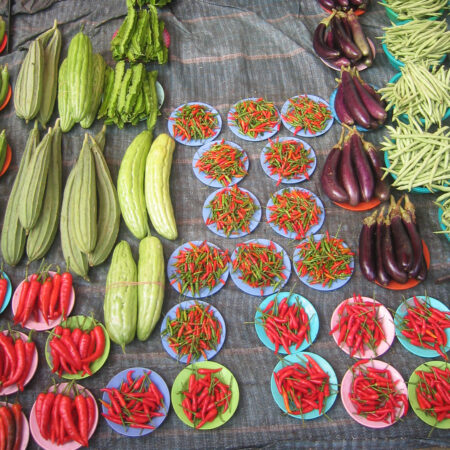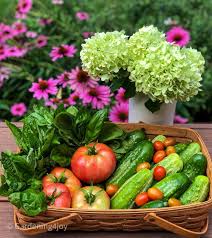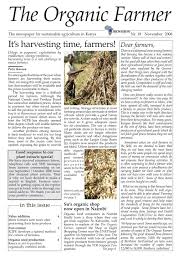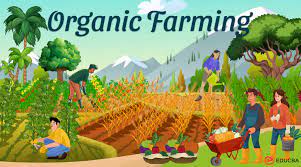
Organic farming techniques tailored for small farms prioritize sustainable practices that maximize productivity while respecting ecological balance. These farms often employ methods such as crop rotation, companion planting, and integrated pest management (IPM) to maintain soil fertility and minimize pests and diseases naturally. Cover cropping and composting are crucial practices that enhance soil structure and nutrient content without relying on synthetic chemicals. Small-scale organic farmers also emphasize biodiversity, using diverse crop varieties and preserving natural habitats to support beneficial insects and pollinators. By integrating these techniques, small farms can achieve long-term sustainability, resilience against climate variability, and produce nutritious crops that meet organic standards and consumer demand.

Organic farming techniques for small farms are integral to sustainable agriculture, emphasizing practices that enhance soil health, biodiversity, and crop productivity without relying on synthetic chemicals. Small-scale organic farmers employ a variety of methods tailored to their size and resources, ensuring efficient use of land while maintaining ecological balance.
One fundamental practice in organic farming for small farms is crop rotation. This technique involves alternating the types of crops grown in specific fields each season. By rotating crops, farmers can break pest and disease cycles, improve soil fertility, and prevent nutrient depletion. For example, legumes like peas and beans fix nitrogen in the soil, benefiting subsequent crops that require nitrogen for growth. Crop rotation also helps maintain soil structure and reduces erosion, contributing to long-term sustainability.
Companion planting is another effective organic technique utilized by small farmers. This practice involves planting different crops together that benefit each other by deterring pests, enhancing nutrient uptake, or providing shade and support. For instance, planting aromatic herbs like basil or marigolds alongside vegetables can repel pests naturally, reducing the need for chemical pesticides. Additionally, certain plant combinations can improve soil health by enhancing microbial diversity and nutrient cycling, fostering a balanced ecosystem within the farm.
Integrated pest management (IPM) is crucial for small-scale organic farming to control pests while minimizing environmental impact. IPM combines various strategies such as crop rotation, companion planting, biological control (using natural predators or parasites), and cultural practices (like removing crop residues or maintaining proper plant spacing) to manage pest populations effectively. By reducing reliance on synthetic pesticides, IPM preserves beneficial insects and pollinators essential for crop health and ecosystem balance.
Cover cropping plays a significant role in organic farming techniques for small farms, particularly during off-season periods or as part of crop rotation cycles. Cover crops like clover, rye, or vetch are planted to protect and enrich the soil. They help prevent erosion, suppress weeds, and improve soil fertility by adding organic matter when they decompose. Cover crops also enhance water retention and microbial activity in the soil, contributing to overall soil health and resilience against environmental stresses.
Composting is a cornerstone practice in small-scale organic farming, converting organic waste materials into nutrient-rich compost for soil amendment. Farmers collect plant residues, kitchen scraps, and animal manure, allowing them to decompose into a valuable soil conditioner. Compost improves soil structure, enhances nutrient availability, and supports beneficial soil organisms crucial for plant growth. Small farmers often integrate composting into their operations to reduce reliance on external inputs and close nutrient cycles within their farms.
Diversification of crops is essential for small organic farms to mitigate risks associated with pests, diseases, and market fluctuations. Growing a variety of crops helps spread risk and optimize land use throughout the growing season. Moreover, diverse crops attract different beneficial insects and pollinators, contributing to biodiversity and ecosystem resilience. Small farmers may also integrate livestock into their farming systems, utilizing animal manure for composting and soil enrichment while diversifying income streams.
Water management is critical for small-scale organic farming, particularly in areas prone to drought or with limited water resources. Techniques such as mulching, drip irrigation, and rainwater harvesting help conserve water and optimize its use in crop production. Mulching reduces evaporation, suppresses weeds, and maintains soil moisture, while drip irrigation delivers water directly to plant roots, minimizing wastage and promoting efficient water use.
Small-scale organic farmers often engage in community-supported agriculture (CSA) or direct marketing strategies to connect with consumers and enhance farm viability. CSA programs involve consumers purchasing shares of the farm’s produce in advance, providing farmers with financial stability and building relationships with local communities. Direct marketing through farmers’ markets, farm stands, or online platforms allows small farmers to sell their products directly to consumers, promoting organic practices and educating the public about sustainable agriculture.
In conclusion, organic farming techniques for small farms emphasize sustainable practices that enhance soil health, biodiversity, and crop resilience. By integrating crop rotation, companion planting, IPM, cover cropping, composting, diversified cropping systems, water management strategies, and direct marketing approaches, small-scale organic farmers can achieve economic viability while preserving natural resources and meeting consumer demand for nutritious, environmentally friendly produce









